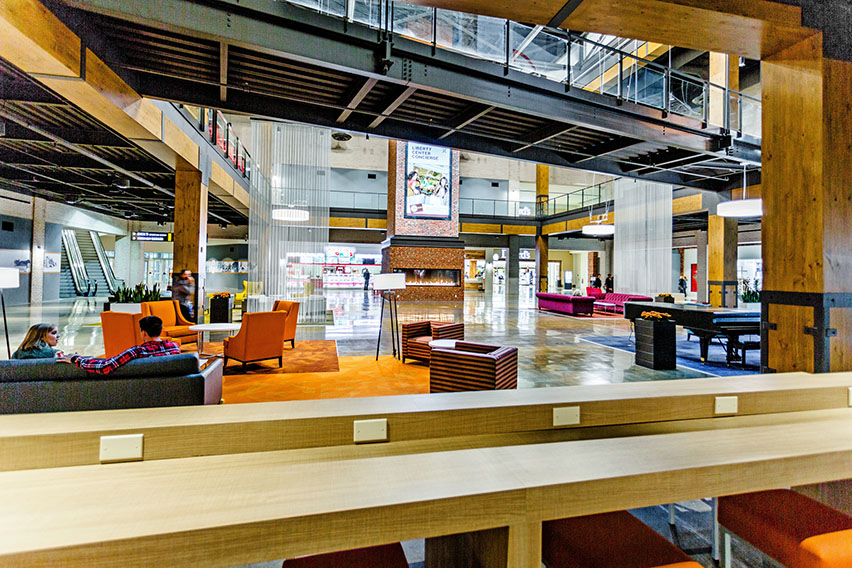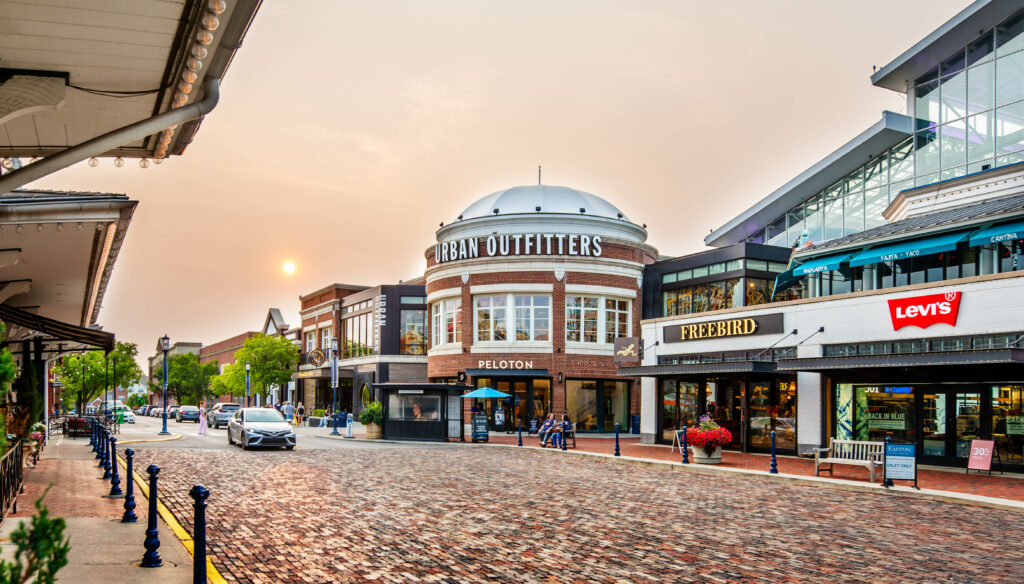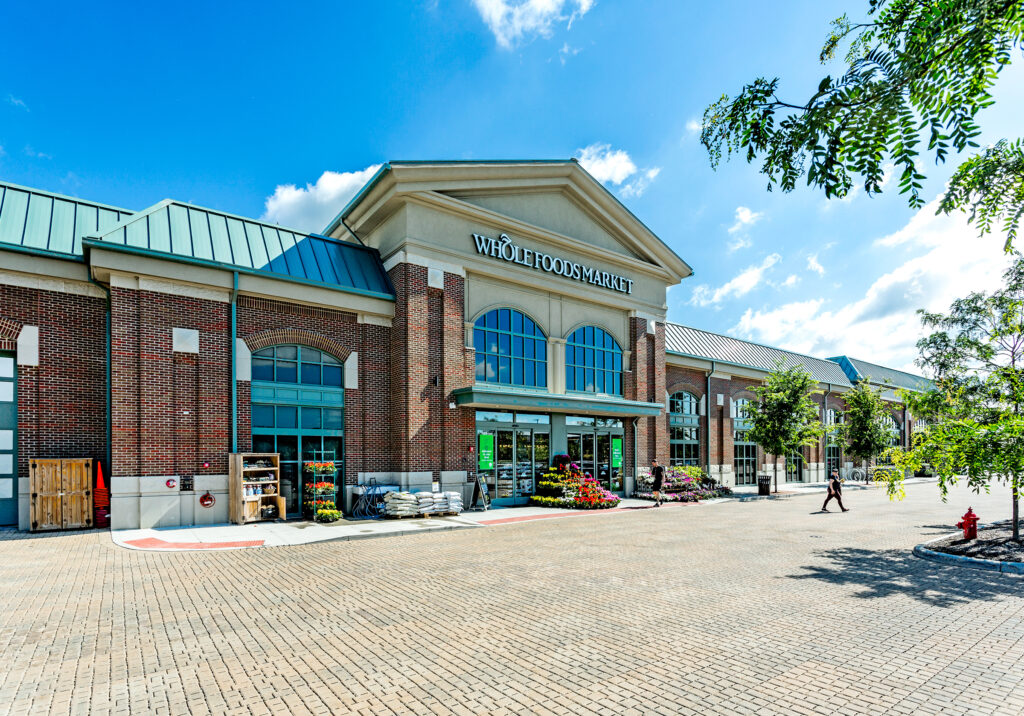by Beau Arnason
Technological innovations are becoming an increasingly integral part of the mixed-use landscape
At some of the most innovative and inspiring commercial landscapes around the country, new technologies are becoming an important piece of the visual and experiential fabric. From signage to celebrations, technology is an integral part of many retail and mixed-use centers.
Given the degree to which technology continues to play a growing role in our day to day lives, it should not come as a surprise that tech tools have become so ubiquitous in public spaces. But the wide range of applications–and the creativity and flexibility that they unlock–opens up a wide range of current and future possibilities.
It’s important to recognize that technology is now moving from a curiosity to an essential element. Tech is used for storytelling, wayfinding, to add convenience and efficiency, and to make environments more engaging and dynamic. Forward-thinking developers are not integrating technology because it’s kitschy, but because it works.
Below are a few examples of how Steiner has introduced technology-driven content into projects, as well as some thoughts about where this trend might be headed in the future.
Liberty Tech
The recently opened Liberty Center in Cincinnati, Ohio, illustrates some of the varied ways in which technology can add value and vibrancy in a mixed-use environment. One of the first and most familiar images of Liberty is the project’s enormous brick smokestack. This structure represents the region’s industrial and manufacturing heritage, and its foundries and pottery-making traditions. The smokestack soars above Liberty’s Foundry Building, and serves as an iconic symbol of the project and a visual cue.
At the top of the 120-foot smokestack is The Beacon, a 31.5-foot LED feature made up of nearly 1,500 individual LED fixtures that total nearly 30,000 pixels. This high-tech virtual canvas is designed to display customized multimedia content, adding visual dynamism for guests moving in and around the project. Multimedia content can be changed periodically to include thematic content and concepts for seasonal changes and special events.
Inside The Foundry Building at the base of the smokestack is another surprising new technological innovation: The Forge. The Forge is a large-scale LED display integrated above an active fireplace/hearth. The hearth opens onto the ‘Living Room’ space, a warm and welcoming gathering point for Liberty Center guests and residents.
The approximately 12 x 21-foot screen uses a remarkable video ‘trompe l’oeil’ effect where the entire structure appears to be real brick, then magically transforms to reveal a range of display graphics. A curated media program presents creative expressions of the space’s identity–used not for advertising, but for ambience and texture. The Forge becomes an amenity in and of itself, presenting everything from vintage holiday posters, to iconic Cincinnati images.
Dollars and sense
As technology continues to get more efficient and cost-effective, its use in retail and mixed-use projects will continue to increase. That process is already underway, and is evident in the spike of usage and integration of LED screens. The cost has simply decreased so much that the convenience, ease of use and attractiveness now outweigh the price tag.
Technology will always require sophisticated cost considerations. Developers need to make thoughtful determinations about how much and what type of hardware to invest in, and how long a specific technology will remain. Anecdotally, it seems like a growing number of developers are more willing to take risks–as the “wow” factor can deliver a potent experiential payoff.
In other instances, a fairly modest investment can pay off by making spaces more flexible and user friendly. In Liberty Center’s semi-private community space, multi-faith gatherings are enhanced by the flexible display capabilities of The Rosette, a round programmable LED display evocative of traditional stained glass. The Rosette displays imagery that seamlessly morphs between symbols drawn from a diversity of religious and spiritual traditions. Different users of the Chapel space can program the Rosette to display imagery appropriate for their activity.
The new old school
For all of the benefits of technology in retail and mixed-use environments, there are still plenty of instances where “old school” features remain the most effective option. Flags and banners mounted on lampposts or light poles are the kind of physical features that cannot be easily replaced without losing something essential in the process.
In other cases, new technologies and applications just look old school. Parts of Liberty Center’s parking lots use a cobblestone surface to assist with water drainage and runoff. The sophisticated water retention system under the parking deck at Liberty, and the permeable pavers used throughout the project, are an example of older technologies applied in new ways.
Value-driven tech
One of Steiner’s main missions when developing a project is to create memorable and enduring places that create civic and social hubs for nearby communities. With the help of technology, great spaces can bring people together and become true community resources. In other words, this is not just innovation for the sake of innovation, but meaningful enhancements of environment and experience.
The irony of mixed-use environments that often rely on old-fashioned ideas about commercial density and the dynamism of streetscapes and town centers leveraging 21st century technology is evident. But old-school authenticity and futuristic accents and enhancements are a potent combination. Because whether it’s brick and mortar or bits and bytes, these literal and digital landscapes are designed to fundamentally do the same thing: to bring people together, to make connections and facilitate experiences.






